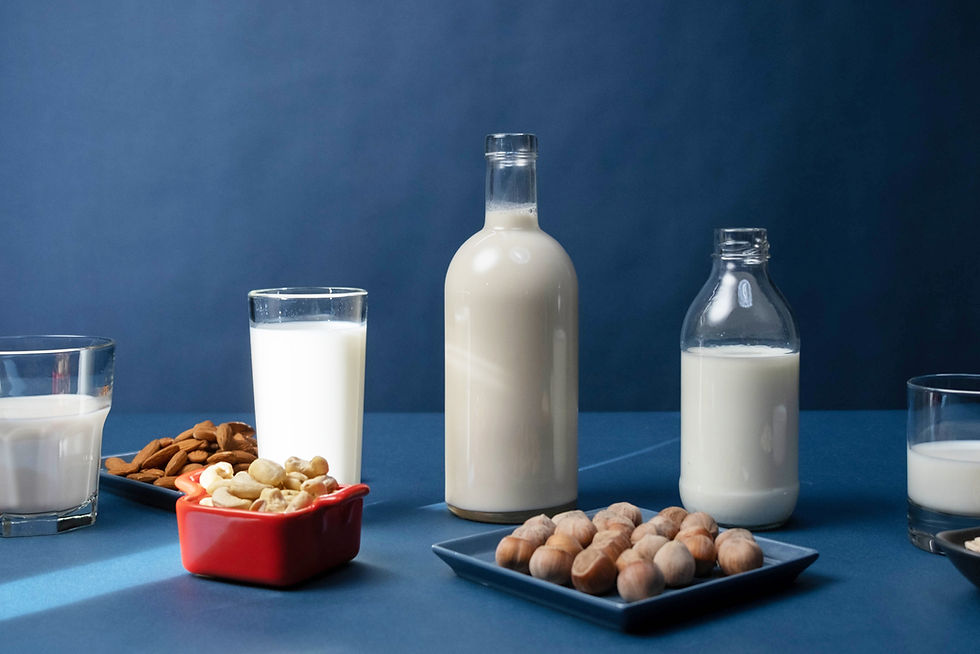E Numbers - What Are They?
- The Young Vegan

- Feb 13, 2021
- 3 min read
Updated: Mar 15, 2021
Our bodies are all made of chemicals and all of the foods that we eat consist of chemicals in one form or another as well. Many food additives are chemicals which exist in nature such as antioxidants ascorbic acid (vitamin C) or citric acid, found in citrus fruits. However, when you see them in an ingredients list they are considered "additives" because they are added to the food in the manufacturing process. Many other additives are now man-made to perform certain functions in food. Food additives have used for decades but it was decided that a coding system was needed to organise these additives and the system of E numbers was developed. E numbers are codes for substances used as food additives that are used within the European Union (EU) and European Free Trade Association (EFTA). The "E" stands for "Europe" and these codes are commonly found on food labels in the ingredients list. They are all tested for safety before approval to be added to foods by the European Food Safety Authority (EFSA).

The History Of E Numbers
It was first decided to have a single list of all E Numbers in1962 with a food colouring colouring list, then as the years went on more ingredients were added, preservatives in1964, antioxidants in 1970 and emulsifiers, stabilisers, thickeners and gelling agents were added in 1974.
Food additives are grouped by what they do. Antioxidants stop food becoming rancid or changing colour by stopping the food reacting with oxygen in the air, like using citric acid to stop a sliced apple going brown. Colours are used to change the colour of a food, sometimes to make the food more exciting, other times it is to make the food look its natural colour as this can be lost during processing. Emulsifiers, stabilisers, gelling agents and thickeners are used to help mix or thicken ingredients. Preservatives are used to keep food safer for longer and sweeteners such as stevia and aspartame are many times sweeter than sugar, so that a little bit goes a long way.
Are E Numbers Vegan?
There are loads of E numbers that are used in food, cosmetics and other beauty products, most of them are vegan but there are a few that aren't. Without knowing what the codes mean, you can't guess whether or not an additive is vegan or is animal derived, below is a list of E numbers that almost always come from animal sources.
E120: Carmine, also known as cochineal, carminic acid or natural red is made from crushed and boiled beetles; it is used as red food colouring.
E441: Gelatine is gelling agent made from boiled animal bone and skin; it is often found in sweets, jellies and is often used to make capsules for medicines and supplements.
E542: Bone phosphate is made from ground up animal bones and is used to stop food from drying out.
E901: Beeswax is wax that is made by bees, it is used as a glazing agent in sweets and many other foods.
E904: Shellac is another glazing agent. It is made by collecting the secretions of an insect called the lac bug, these insects are often killed in the process.
E910, E920, E921: L-cysteine and its derivatives are made from animal hair and feathers, these additives are found in some breads as an improving agent.
E913: Lanolin is a greasy substance secreted by sheep and other woolly animals. While mostly used in cosmetics, it’s also often used to make vitamin D3, rendering many multi-vitamins and fortified foods unsuitable for vegans. Vitamin D2 is vegan though, so it is still possible to safely supplement.
E966: Lactitol is a sweetener derived from lactose, which is made from milk.
How To Check E Numbers
The easiest way to check if something contains non-vegan E numbers is to look for a vegan logo, the sunflower logo, the vegan society logo or wording on the packaging that states "vegan". If there is no obvious sign check the ingredients and see if there is anything that you recognise as being animal derived. Next it's checking the E numbers, if in doubt use an app or website to check which E numbers have been used. It can be tricky checking ingredients, but with practice it does get easier. Remember though that no one is perfect and we all make mistakes, as long as you are doing your best that's more than good enough.




شيخ روحاني
رقم شيخ روحاني
الشيخ الروحاني
الشيخ الروحاني
شيخ روحاني سعودي
رقم شيخ روحاني
شيخ روحاني مضمون
Berlinintim
Berlin Intim
جلب الحبيب